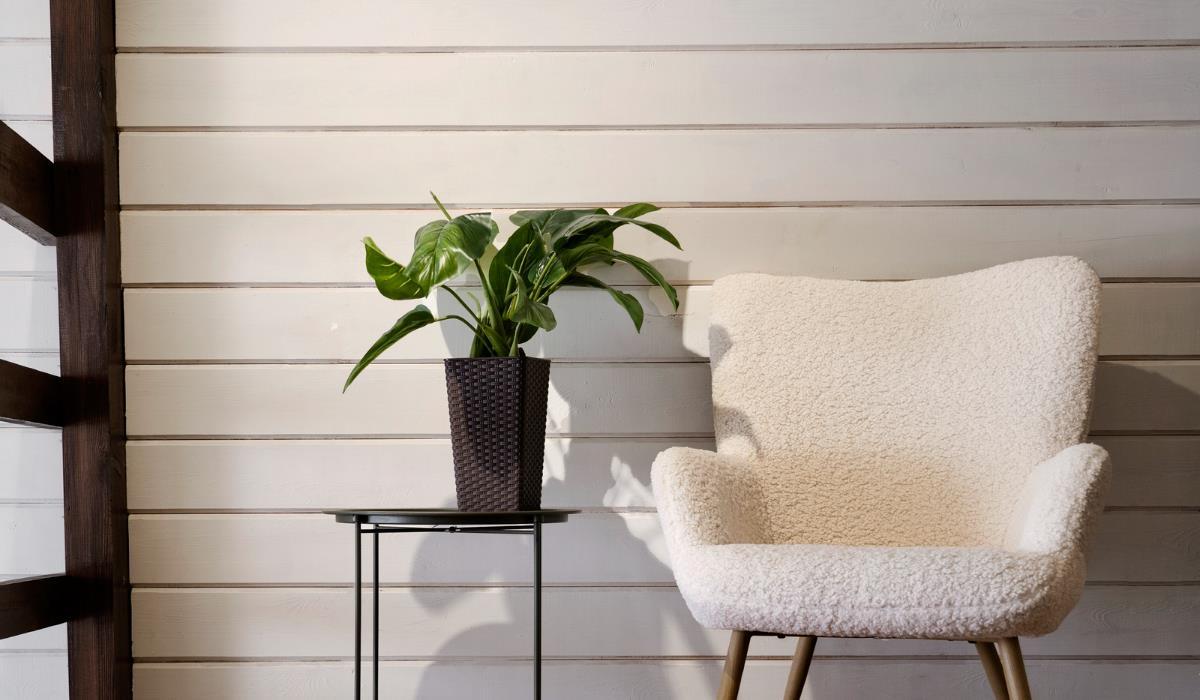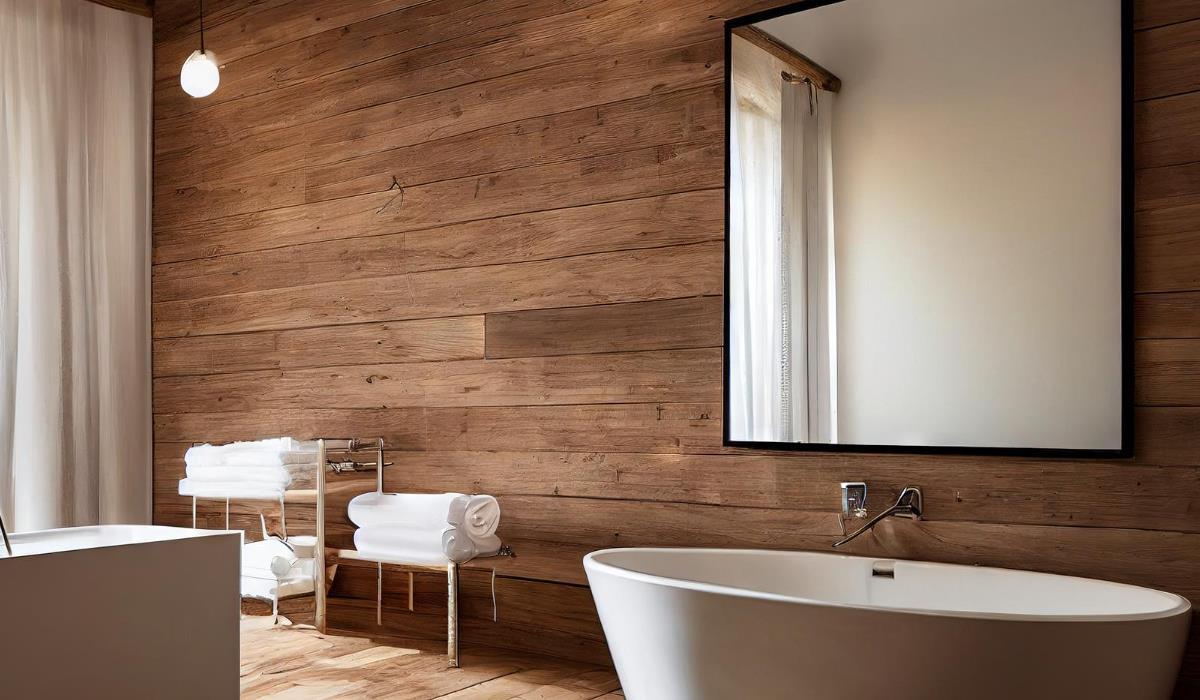Shiplap is a type of wall cladding characterized by horizontal wooden boards placed next to each other. Each board has notches on both long sides that match the other boards. When the boards are laid together, the overlapping joints create a groove, called a rabbet, between them. Although cladding has a long history, its popularity has only recently increased – it is a popular style of lambrising that can be found in traditional farmhouses, coastal homes and modern designs alike. It is the perfect solution for those who want to transform their homes into comfortable and cozy spaces, adding texture, warmth and authenticity. These claddings are a timeless design choice that can be used as a focal point or to enhance the overall appearance of a room.
In shiplap cladding, the boards are laid horizontally for functional and decorative reasons. This style of cladding was originally used in shipbuilding, as the name suggests. Boards laid horizontally in early cladding had notches that allowed them to overlap slightly. This created a tight connection that protected against water ingress. Shiplap cladding began to appear on buildings in the 18th century. They were popular in cabins in harsh climates because they kept them warm and dry. These claddings were not a decorative element, but a functional necessity. The owners covered and masked the cladding to resemble plaster walls.
Application of shiplap panels

- Walls: They are most commonly used as wall cladding. You can change the look of your walls by covering the entire wall, part of it, or one wall as a focal point.
- Entrances: Creates a striking impact in vestibules and entryways that set the tone for the rest of the house.
- Bathrooms: Using them in bathrooms gives the interior a light, airy and relaxing character. Those in the form of lambrisering are also a durable wall covering that protects the dry wall against moisture.
- Kitchens: In the kitchen they will make the room cozy and hospitable. It can be used to decorate walls, cover ventilation hoods or surround kitchen islands.
- Bedrooms: Shiplap walls are a popular option for creating accent walls and headboards in bedrooms.
- Fireplace Surroundings: The area around the fireplace can be framed with cladding to create an attractive focal point in the room.
- Built-in furniture: Cladding can be used in built-in furniture such as bookcases, shelves, cabinets and window seats.
- Commercial Spaces: Shiplap should not be limited to residential use. Using it in commercial buildings can give them a more casual and relaxed atmosphere.
Popular cladding styles:

- Classic: This style consists of boards laid horizontally with a small space between them. This style of boards are of equal width and thickness, creating a clean and uncluttered look.
- Recycled or distressed: The wood used in this style is reclaimed from other wooden structures such as barns, sheds and factories, so it is uneven and distressed. The character and patina give it an antique and rustic look.
- Stained: Staining brings out the grain and texture of the wood, giving it a warm and natural look. By using different stain colors, you can achieve unique shades of wood.
- With decorative edging: This style of shiplap is characterized by the presence of decorative beading between each board, which adds texture and visual interest.
- Wooden: Wooden boards, usually pine or cedar, are used to create traditional shiplap siding. By painting, staining or leaving shiplap planks natural, various design styles can be achieved.
- Made of wood-based boards: Shiplap made of wood-based boards is a cheaper alternative to wooden boards. Wood-based panels can be painted or stained, but light colors reveal the edges of the layers.
- Made of MDF: Shiplap MDF is an engineered wood product. It is cheaper than natural wood, but it cannot be stained or left untouched.
- Made of vinyl: Made of durable plastic. This material works well in areas with high levels of moisture and traffic, such as bathrooms and kitchens, because it is durable, water-resistant and easy to clean.
- Metal: Commonly used as external cladding on modern industrial buildings. Popular metal materials for shiplap are aluminum and steel. Costs of purchasing and installing wooden shiplap Shiplap costs about the same as other types of lambrising, but is more expensive than installing gypsum board.



